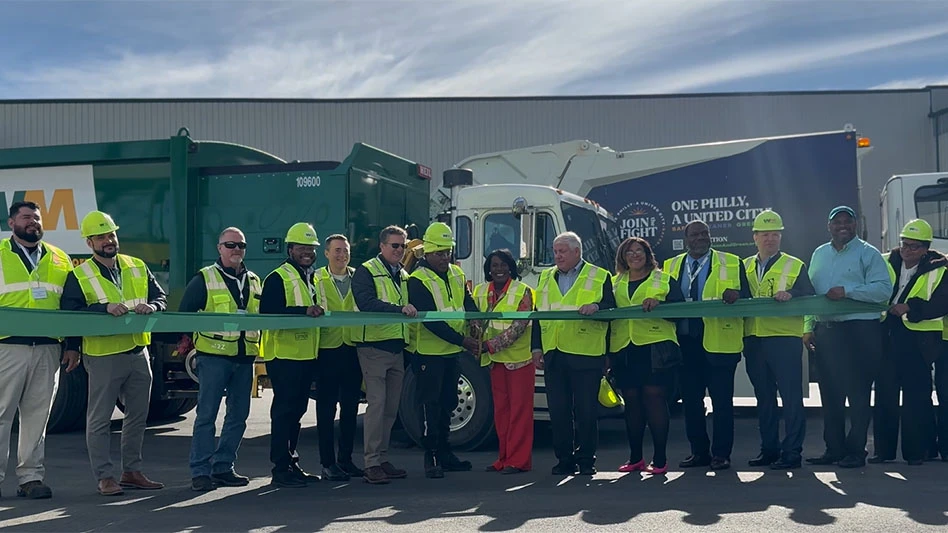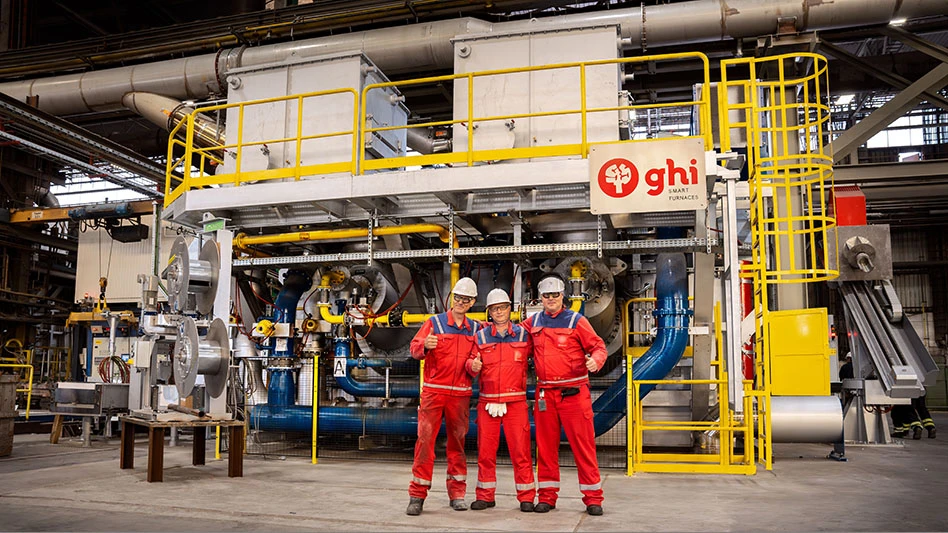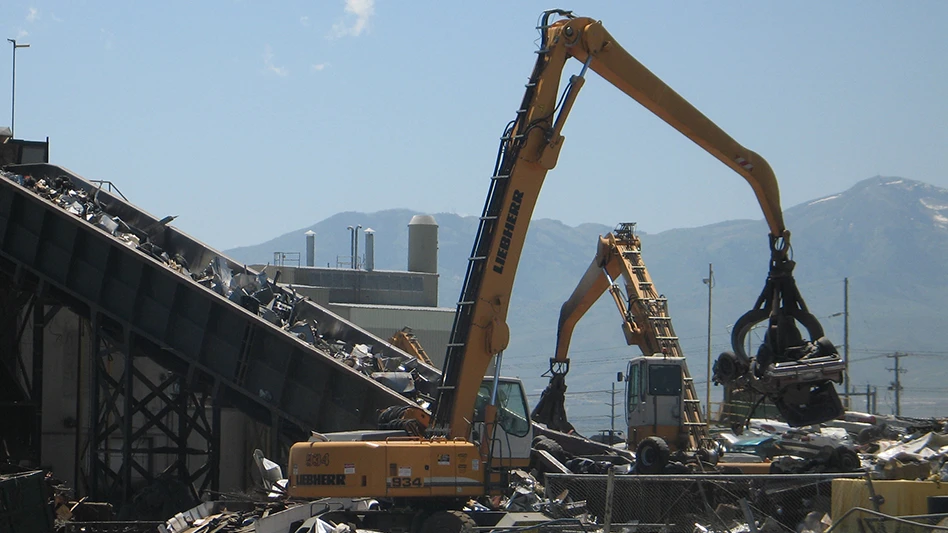
When the Ford Motor Co.’s Rouge Center in Dearborn, Michigan, began its journey to zero waste in 2014, the company’s Dearborn Engine Plant was among the six facilities at the complex to be addressed. In this case, that meant finding a better solution for managing the swarf, or fine chips or filings of cast iron, produced by machining operations at the plant. This material is coated with coolant that can make handling and recycling it more complicated.
Andy Hobbs, director of Ford’s Environmental Quality Office, says the Dearborn Engine Plant adopted a best practice that originated at its Sharonville Transmission Plant in Sharonville, Ohio, near Cincinnati. And that was to install a briquetter to process the swarf into dry, easily transported briquettes that measure 14 inches by 6 inches by 6 inches.
Hobbs says the Dearborn Engine Plant was able to justify the installation of the briquetter because of the push to zero waste at the Rouge site.
“As you can imagine, capital, wherever we invest it, we have to justify it,” he says. “There was some investment justification required here. But once we figured out how we could get the whole complex to zero waste to landfill and demonstrate the cleanliness of the operation as well as the environmental benefits, it was just a no-brainer.”
Addressing the swarf
According to Ford, finding a better way to address the swarf was one of the more difficult questions to consider in its journey to zero waste at the Rouge Center.
“Typically, we just have a loose swarf situation, which is heavily influenced by the oil,” Hobbs says. “Originally, in the old days, we would landfill it, which we decided a long time ago was certainly not a best practice because of the oil contamination and the way of handling it.”
He continues, “We basically went through a number of iterative steps that moved away from [the swarf] just being landfilled to being semicleaned and shipped off-site for consolidation to recyclers, and recyclers would do all the work. We don’t like sending oily material across public roads—that is not something that we really want to do. And clearly we recognize that landfilling is a finite resource, even though it is more abundant in the United States than elsewhere.”
Regarding managing the loose swarf at the Dearborn Engine Plant, Hobbs says, “It was a messy situation to deal with at the plants. It’s not ideal for our employees working with that, it’s not ideal for our facilities [and] it’s difficult to maintain.”
He adds, “As we continue to reduce our physical footprint, the more we can reduce that kind of handling the better it is.”
When it comes to recycling and waste management, Hobbs says Ford has best practices that it implements worldwide. “We do not expect the individual plants to go off and manage their own recycling without input from our staff and from other staffs.
He continues, “The things that can affect that are the production process itself [and] the physical location of the plant in terms of accessibility to recycling services. We actually work with what we call ‘total waste managers’ to manage the recycling efforts. So, no one does it independently.”
Hobbs is quick to add, however, “That does not mean that the individual plants do not have great ideas because they do. And they certainly are listened to and replicated worldwide.”
At the Dearborn Engine Plant, Ford replicated the briquetter installation it had in place at its Sharonville Transmission Plant, installing an Extruder model briquetter manufactured by Filtra-Systems, Farmington Hills, Michigan. However, Ford operates a number of briquetters throughout its network of plants, Hobbs says.
The system is simple, he says, consisting of a screw conveyor that moves material from a settling tank and pressure filter and leads to the briquetter. The finished briquettes are stored in a container until they are transported by Veolia, which manages the facility’s material stream, to Ferrous Industries, based in Detroit, which processes the company’s ferrous metals.
The benefits of briquetting
The Dearborn Engine Plant generates roughly 240 tons of swarf annually, or 20 tons per month. Ford says it recycles all the swarf it generates globally, and that amount can range from 441 tons annually at its largest plants to 110 tons at the company’s smaller plants.
Briquetting the swarf makes the material easier to transport and handle. It also enables Ford to recover the coolant that coats the metal. At the Dearborn Engine Plant, an estimated 5,000 gallons of coolant will be recovered per year, Ford says.
Other benefits the Dearborn Engine Plant has seen since it began briquetting its swarf range from fewer employees needed to keep the facility clean and an improved work environment. Hobbs says, “I don’t think you can underplay the improved physical environment—it looks and feels more professional.”
In addition to the swarf generated at the Dearborn Engine Plant, the aluminum scrap from the complex is shipped to Novelis, Hobbs says, adding that up to 20 million pounds of aluminum are recovered from the complex’s stamping plant. “That’s a huge cost benefit for us,” he says of the company’s aluminum recycling efforts.
The cost benefits of the Rouge Center’s swarf recycling program are less apparent, Hobbs says, noting that the company does not break its zero-waste benefits down by cost center.
The drive to zero
Before the Rouge Center attained zero-waste status, Ford empowered Veolia to decide whether a particular material stream was too expensive to recycle. That is no longer the case. “This is a true zero-waste-to-landfill operation,” Hobbs says.
After implementing the zero-waste program in Dearborn, Hobbs says Ford monitored it for three months “to make sure all of its projections and expectations came to fruition.” He adds, “We very closely control and monitor every single waste stream.”
This is achieved through an integrated software system, the backbone of which is the company’s Environmental Operating System, that is used across Ford’s global operations.
As of the end of December 2016, 74 of Ford’s facilities—41 manufacturing sites and 33 nonmanufacturing sites—worldwide have been designated zero waste to landfill. Hobbs notes that this is roughly 60 percent of the company’s total operations, adding, “We are working to get to 100 percent.”

Explore the Scrap Metals Supplement 2017 Issue
Check out more from this issue and find your next story to read.
Latest from Recycling Today
- ReMA accepting Lifetime Achievement nominations
- ExxonMobil will add to chemical recycling capacity
- ESAB unveils new cutting torch models
- Celsa UK assets sold to Czech investment fund
- EPA releases ‘National Strategy to Prevent Plastic Pollution’
- South Carolina launches recycling app
- Resource Recycling Systems transitions to employee ownership model, refreshes branding
- APR upgrades PCR certification program





